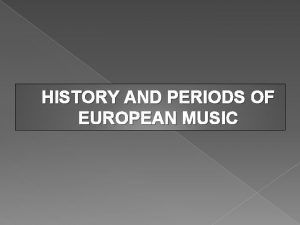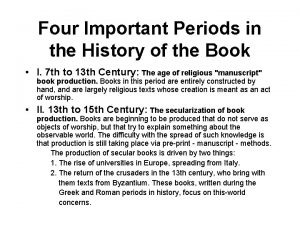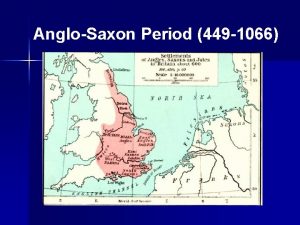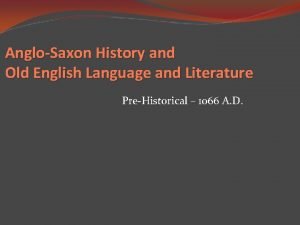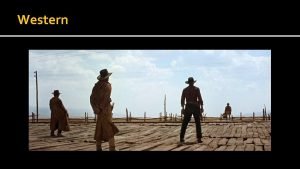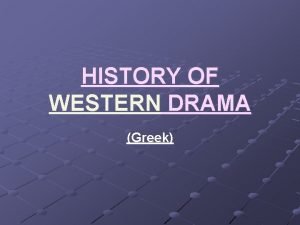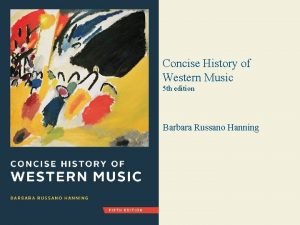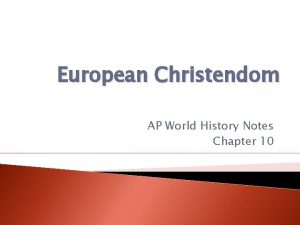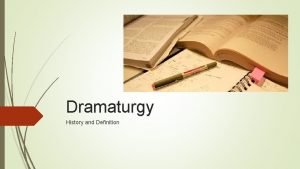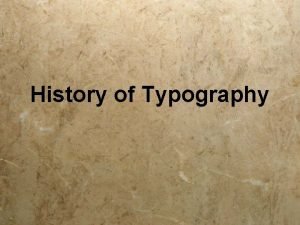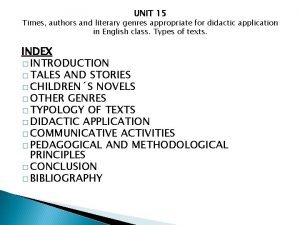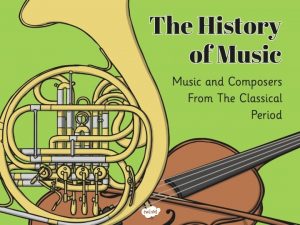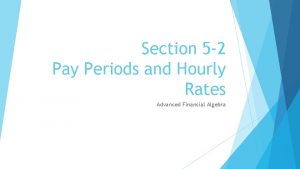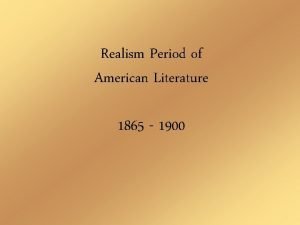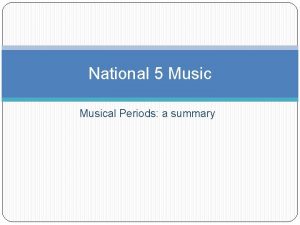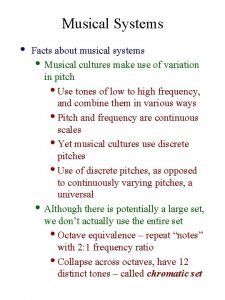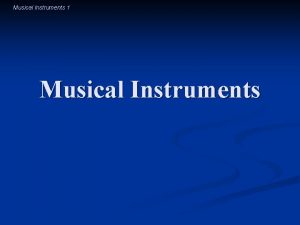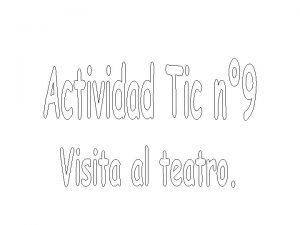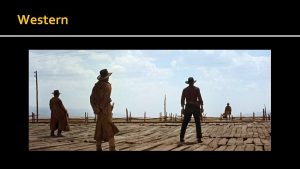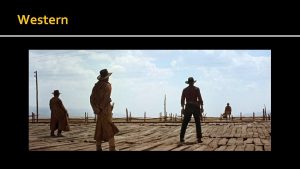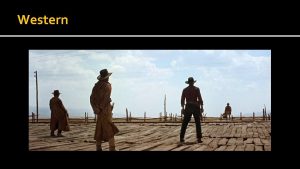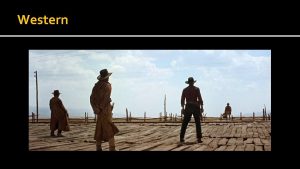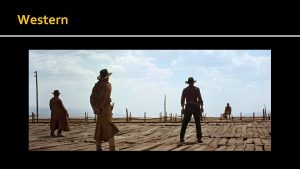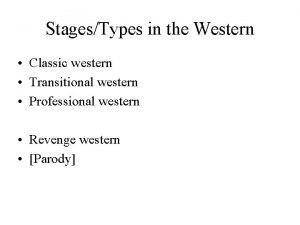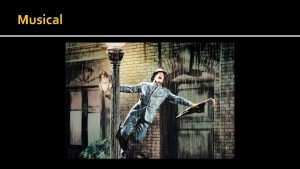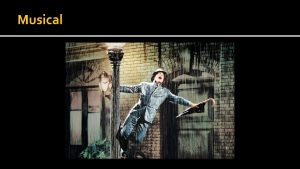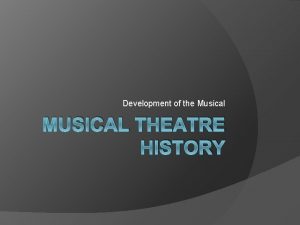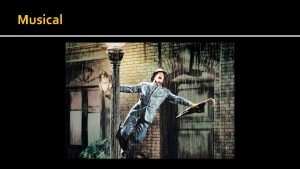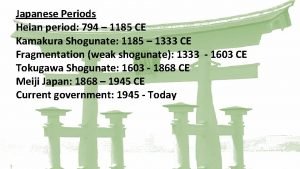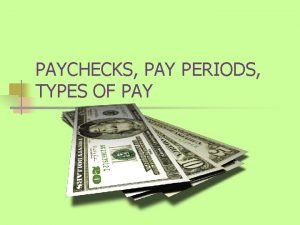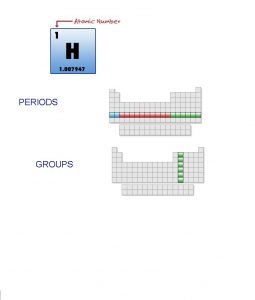The Periods of Western Musical History What is































































- Slides: 63

The Periods of Western Musical History

What is “classical music? ”

Periods of Western Musical History 1. Antiquity (? B. C. -500 A. D) 2. Medieval (476 A. D. to 1400 A. D. ) 3. Renaissance (1400 to 1600 A. D. ) 4. Baroque (1600 to 1750) 5. Classical (1750 to 1820) 6. Romantic (1820 to 1900) 7. Impressionist (1875 to 1925) 8. Modern (1900 to 1960) 9. Post-Modern (1960 -present) (a. k. a. Contemporary)

Periods of Western Musical History Music of Antiquity Dates: ? B. C. -500 A. D

ANTIQUITY Dates: ? B. C. -500 A. D. Very little is known about the composers or their music at this time. One of the few examples is The Epitaph of Seikilos, composer unknown. This song was written on a tombstone with these words: “I am a tombstone, an image. Seikilos placed me here as an everlasting sign of deathless remembrance. ” Listening Examples: Epitath of Seikilos Hymn to the Sun Hymn to Zeus

Sack of Troy Birth of Athena Painting on an ancient vase, Zeus The Discus Thrower Venice de Milo

Periods of Western Musical History Medieval (476 A. D. to 1400 A. D. ) Well-known instrument of the time: The Pan Flute

Detail from Monks Singing the Office; Oliv etan Master and the Maestri del Corali di Lodi, parchment, Italy (c. 1439 -1447) Fragment of a Medieval Tapestry, Switzerland Mary Magdalene, Crimelli, 1420’s -1430’s

Medieval Musical Examples Gregorian Chant Organum Chant Liturgical Drama Goliard Motet Troubadours

Periods of Western Musical History Renaissance (1400 to 1600 A. D. ) French for "rebirth, ” the period of music history from around 1400 to the early 1600’s that coincided with a revival of interest in art, architecture, literature, and learning throughout Europe is referred to as Renaissance.

Sistine Chapel ceiling, painted by Michelangelo between 1508 and 1512 Mona Lisa, Leonardo da Vinci, 1503– 1517 David, Michelangelo, 1501– 1504

TERMS Main forms of sacred vocal music: Mass and Motet • Mass -sacred musical choral composition that sets invariable portions of the Eucharistic liturgy ("Communion Services") principally that of the Catholic Church, the Anglican Communion, and Lutheranism, to music. Most Masses are in Latin, the traditional language of the church. • Kyrie (Lord Have Mercy, Christ have Mercy…) • Gloria (Glory to God in the highest…) • Credo (I believe in one God, the Father Almighty…) • Sanctus and Benedictus (Holy, Holy … Blessed is He who comes… ) • Agnus Dei (Lamb of God) • Motet (Sacred piece of music in several parts with words) Main form of secular vocal music: Madrigal • Madrigal - Secular song which has been written or arranged for several vocal parts, many times unaccompanied.

Three of the notable composers: Josquin Des Prez Giovanni Pierluigi da Palestrina Thomas Morley (Secular) Well-known instrument of the time: The Lyre (listen)

Josquin Des Prez Dates: 1450? -1521 The first master of polyphonic vocal music. Let’s Listen! Kyrie Eleison (Lord Have Mercy)

Giovanni Pierluigi da Palestrina Dates: 1525? -1594 The Italian of the Renaissance Let’s Listen! Sicut Cervus (motet, Psalm 42) Gloria (part of Mass) Exaltate Deo (motet)

Thomas Morley Dates: 1557 or 1558 - 1602 Morely was an English composer, theorist, singer and organist of the Renaissance. He was one of the foremost members of the English Madrigal School. Morely was also involved in music publishing, holding a printing patent which at that time was a type of monopoly. Let’s Listen! Two English Madrigals Now is the Month of Maying My Bonnie Lass She Smileth

Periods of Western Musical History Baroque (1600 to 1750) The period called "Baroque" in music history extends roughly from 1600 to 1750. Three of the most important Baroque Composers are J. S. Bach, George Frederick Handel, and Antonio Vivaldi.

Well-Know Instrument of the Time The Harpsichord Let’s Listen

Johann Sebastian Bach 1685 - 1750

Term What's a Concerto? A concerto is a piece of music in which one or more solo instruments get to shine in front of an orchestra. A concerto can be written for any instrument. A "concerto grosso" is a concerto for two groups of instruments -- a smaller group of soloists alternating with a larger group.

Listening Example Johann Sebastian Bach Brandenburg Concerto No. 2 Movement 1 Brandenburg Concerto No. 2, Movement 1

George Frederick Handel 1685 - 1759

Listening Example George Frederick Handel, Water Music, Hornpipe Messiah, Hallelujah

Antonio Vivaldi 1678 -1741 Antonio Vivaldi was born in Venice, Italy, which is where he spent most of his life. His father, a barber, baker and violinist, taught him to play the violin, and the two would often perform together. Vivaldi was the oldest of six (some say nine) children. Vivaldi inherited his father's musical talent, and his flaming red hair. Vivaldi became a priest, but he spent most of his life composing and teaching music.

Listening Example Antonio Vivaldi The Four Seasons Spring

Periods of Western Musical History Classical (1750 to 1820) The term "classical" is often used to describe music that is not rock, pop, jazz or another style. However, there is also a Classical era in music history that includes compositions written from about 1750 to 1820. Music from this period is orderly, balanced and clear. Its form is very important as is its harmony and tonality—that is, the musical key in which a piece was written. The piano was the most important instrument used by composers during this period. The String quartet became popular. (Today, there are many pop music covers that are played by string quartets. ) Three of the musical masters of the Classical Period are Franz Joseph Haydn, Wolfgang Amadeus Mozart, and Ludwig Van Beethoven.

Well-Known Instrument of the Time The Clarinet (Let’s Listen)

Classical Masters Franz Joseph Haydn Wolfgang Amadeus Mozart Ludwig Van Beethoven

Franz Joseph Haydn 1732 - 1809 Franz Joseph Haydn was the most famous composer of his time. He helped develop new musical forms, like the string quartet and the symphony. In fact, even though he didn't invent it, Haydn is known as the "Father of the Symphony. "

Term What is a Symphony? A symphony is an extended elaborate musical composition for an orchestra, usually in 4 sections (movements. ) Franz Joseph Haydn Symphony No. 94, "Surprise“ Second Movement Symphony No. 1, Movement 1

Wolfgang Amadeus Mozart 1756 - 1791 Wolfgang Amadeus Mozart was born in Salzburg, Austria, where his father Leopold was a violinist and composer. Wolfgang was a child prodigy. He composed his first piece of music at age five; he had his first piece published when he was seven; and he wrote his first opera when he was twelve. By the time Wolfgang was 6, he was an excellent pianist and violinist. He and his sister Maria Anna traveled all over Europe performing for royalty.

Terms What’s a Sonata? Sonata (literally “to sound” as opposed to “sun”) is a large scale work for an instrument, usually keyboard, usually with 3 sections (movements: ) I. a tune is played and varied II. slow III. fast. What's a Rondo? Rondo is an Italian word that means round. A rondo is an instrumental form with a refrain that keeps coming back. Unlike the verses of a song, though, the music in a rondo changes between each repetition of the refrain. Listening Example: Wolfgang Amadeus Mozart Piano Sonata No. 11, Turkish Rondo Symphony No. 40, Beginning of Movement No. 1 Symphony No. 41 (Jupiter Symphony), Movement No. 1

The Marriage of Figaro is comic opera in four acts composed in 1786 by Wolfgang Amadeus Mozart, with an Italian libretto written by Lorenzo Da Ponte. It premiered in Vienna in 1786. The Marriage of Figaro is now regarded as a cornerstone of the standard operatic repertoire, and it is on the list of the most-performed operas worldwide. Listening Examples – synopsis of plot, excerpts from opera.

Ludwig Van Beethoven 1770 - 1827 Ludwig van Beethoven was born in Bonn, Germany. Beethoven is considered one of the greatest musical geniuses who ever lived. He may be most famous for his nine symphonies, but he also wrote many other kinds of music: chamber and choral music, piano music and string quartets, and an opera.

Listening Examples Ludwig van Beethoven Symphony No. 5, First Movement Moonlight Sonata Ode to Joy (From 9 th Symphony, 4 th Movement)

Periods of Western Musical History Romantic (1820 to 1900) Romantic music came into its own at the beginning of the 19 th century. Music from this era sounds almost boundless and free from any limitations of form. Much of this music is programmatic—that is, it is meant to describe something, perhaps a scene in nature or a particular feeling.

Romantic Dates: 1815 -1910 Who were the notable composers? Richard Wagner Hector Berlioz Frédéric Chopin Franz Liszt Pyotr Ilyich Tchaikovsky Sergei Rachmaninoff

Richard Wagner, Germany Dates: 1813 -1883 The father of chromaticism. Chromaticism, or Chromatic Scale, is a music scale made up of 12 notes, each a half step apart. For example, on the piano a chromatic scale is played by playing each white and black key between two notes with the same letter Let’s Listen! name. Ride of the Valkyries Bridal Chorus

Hector Berlioz, France Dates: 1803 -1869 The troubled master of fantasy - far ahead of his time, Berlioz composed “Program Music”. Program music is any piece of instrumental music that is based on a book, story or picture and is trying to tell about it through the music. • Symphonie Fantastique, 5 th • Damnation of Faust Let’s Listen! Movement – Dream Of A Witches Sabbath

Frédéric Chopin, Poland Dates: 1810 – 1849 Frédéric Chopin was one of the greatest pianists of his day. Chopin was born in a town just outside of Warsaw, Poland. Let’s Listen! Polonaise in A Major, Military March Nocturne Op. 9 No. 2

Franz Liszt, Hungary Dates: 1811 - 1886 While Franz Liszt was a composer, conductor, critic and teacher, he was best known as a pianist. Let’s Listen! Hungarian Rhapsody, No. 2

Pyotr Ilyich Tchaikovsky, Russia Dates: 1840 - 1893 Tchaikovsky’s compositions are some of the most popular works in the repertoire of classical music. Let’s Listen! 1812 Overture

Sergei Rachmaninoff, Russia Dates: 1873 - 1943 Sergei Rachmaninoff was one of the most important composers in Russia in the early 20 th century. He was a wonderful pianist, and some of his most important compositions were written for that instrument. Let’s Listen! Piano Concerto in C Minor

American Romantic-Era Composers Edward Mc. Dowell 1860 - 1908 Let’s Listen! To a Wild Rose Scott Joplin (King of Ragtime Composers) 1867/1868 – 1917 Let’s Listen! Maple Leaf Rag Entertainer Amy Beach 1867 – 1944 (First successful American female composer of large-scale art music) Let’s Listen Piano Concerto

Periods of Western Musical History Impressionist (1875 to 1925) Impressionism is a term transferred from painting to music. Instead of lifelike paintings with hard outlines, Impressionist artists used dots, or shades of color to create the "impression" of a scene on canvas. Musical Impressionists used different chord combinations and scales to try and capture the same kind of mood in their compositions. Claude Monet, Haystacks, (sunset), 1890– 1891

Starry Night, 1889 Vincent Van Gogh Self-Portrait 1889 Vincent Van Gogh

Place d'Anvers, Paris, 1880 Federico Zandomeneghi The Dance Lesson, 1879 Edgar Degas

The Cliff at Fecamp 1, 1881 Claude Monet Still Life With Pears, ca. 1885 Paul Cezanne

The Kitchen Gardens Camille Pissaro Bathing Woman Pierre-Auguste Renoir

Claude Debussy, France Dates: 1862 -1918 As a child, Debussy was fascinated by visual art, and as he grew up, he loved the new style called "Impressionism. " Instead of painting realistic, lifelike paintings with hard outlines, Impressionists used thousands of dots, or many different shades of color to create the "impression" of what they wanted to depict. Debussy took that idea and applied it to music, creating Impressionism in music. Let’s Listen! Clair de Lune Sunken Cathedral

Joseph-Maurice Ravel, France 1875 - 1937 Joseph-Maurice Ravel was a French composer best known for his piece Bolero (1928), which he considered a trivial piece of music. Bolero was used as theme music in the 1979 move, 10. Let’s Listen! Bolero Mother Goose Suite

Richard Strauss, Germany 1864 - 1949 Richard Strauss was a German composer born in Munich in 1864. He was taught music by his father and composed from the age of six until his death in 1949. Strauss had a fairly comfortable life and experienced a rare burst of creativity in his last decade. Let’s Listen! Don Juan

Periods of Western Musical History Modern (1900 to 1960)

The Modern Era of music evolved from the late Romantic and Impressionist periods as a result of the experimental efforts of such Claude Debussy, Maurice Ravel and Richard Strauss. This copy of the first page of the score of Richard Strauss’ famous orchestral tone poem Don Juan, (1889) distorted by a printer malfunction, is regarded by some as a kind of modern art.

Like many aspects of modern culture, modern music has evolved in many different directions. In general, the most common element among the various types of what can be called Modern Music is the element of experimentation.

Igor Stravinsky Dates: 1882 -1971 Igor Stravinsky was born in St. Petersburg, which was the capital of Russia at the time. His father was a famous opera singer, so as a kid, Igor got to hang out at the opera house, where he met all the famous musicians of the day. Igor Stravinsky is considered to be the most influential composer of the Modern period. Rite of Spring

Arnold Schönberg (1874 -1951, Austria) A Survivor from Warsaw Paul Hindemith (1895 – 1963, Germany) Symphony in Bb Francis Poulenc (1899 -1963, France) Clarinet Sonata

Periods of Western Musical History Post-Modern (1960 -present) (a. k. a. Contemporary)

Post- Modern (Contemporary) Dates: 1960 -present Two of the notable composers: John Cage Steve Reich Sou p And Cans, 1 y W arho 962 l

John Cage Dates: 1912 -1992 John Cage is the pioneer of post -war avant-garde music. Avant. Garde are people or works that are experimental or innovative, particularly with respect to art, culture, and politics. They are “ahead of their time. ” Let’s Listen! Sonata X for Prepared Piano

Steve Reich Dates: 1936 -present Steve Reich is considered the master of minimalism. Minimalism is a style that uses Let’s Listen Music for 18 Musicians pared-down Come Out design elements.

Other Sounds o. Electronic - any music involving electronic processing; not merely just performed on electric instruments. o Serialism – or 12 Tone Technique; putting the 12 notes of the scale (7 white notes, 5 black notes) in a particular order and then basing the whole composition on that order. o. Atonality –Music that has no key or tonal center; made up of rhythmic and melodic forces.

Resources www. slideshare. com www. classicsforkids. org www. google. com www. youtube. com www. wikipedia. org www. brittanica. com
 The approximate dates of the baroque period in music are
The approximate dates of the baroque period in music are Western music periods
Western music periods Chapter 11 musical ensembles
Chapter 11 musical ensembles Three periods of roman history
Three periods of roman history European music history
European music history Four periods of history
Four periods of history What are the four basic period of computer history
What are the four basic period of computer history 3 periods of history
3 periods of history 3 periods of history
3 periods of history History of the western genre
History of the western genre History of western drama
History of western drama Concise history of western music 5th edition
Concise history of western music 5th edition Chapter 10 ap world history
Chapter 10 ap world history Origin of western theatre
Origin of western theatre Dramaturgy definition
Dramaturgy definition History of western typography
History of western typography Hát kết hợp bộ gõ cơ thể
Hát kết hợp bộ gõ cơ thể Bổ thể
Bổ thể Tỉ lệ cơ thể trẻ em
Tỉ lệ cơ thể trẻ em Chó sói
Chó sói Chụp tư thế worms-breton
Chụp tư thế worms-breton Hát lên người ơi
Hát lên người ơi Các môn thể thao bắt đầu bằng tiếng chạy
Các môn thể thao bắt đầu bằng tiếng chạy Thế nào là hệ số cao nhất
Thế nào là hệ số cao nhất Các châu lục và đại dương trên thế giới
Các châu lục và đại dương trên thế giới Công thức tính thế năng
Công thức tính thế năng Trời xanh đây là của chúng ta thể thơ
Trời xanh đây là của chúng ta thể thơ Mật thư anh em như thể tay chân
Mật thư anh em như thể tay chân 101012 bằng
101012 bằng Phản ứng thế ankan
Phản ứng thế ankan Các châu lục và đại dương trên thế giới
Các châu lục và đại dương trên thế giới Thơ thất ngôn tứ tuyệt đường luật
Thơ thất ngôn tứ tuyệt đường luật Quá trình desamine hóa có thể tạo ra
Quá trình desamine hóa có thể tạo ra Một số thể thơ truyền thống
Một số thể thơ truyền thống Cái miệng nó xinh thế chỉ nói điều hay thôi
Cái miệng nó xinh thế chỉ nói điều hay thôi Vẽ hình chiếu vuông góc của vật thể sau
Vẽ hình chiếu vuông góc của vật thể sau Thế nào là sự mỏi cơ
Thế nào là sự mỏi cơ đặc điểm cơ thể của người tối cổ
đặc điểm cơ thể của người tối cổ V cc cc
V cc cc Vẽ hình chiếu đứng bằng cạnh của vật thể
Vẽ hình chiếu đứng bằng cạnh của vật thể Tia chieu sa te
Tia chieu sa te Thẻ vin
Thẻ vin đại từ thay thế
đại từ thay thế điện thế nghỉ
điện thế nghỉ Tư thế ngồi viết
Tư thế ngồi viết Diễn thế sinh thái là
Diễn thế sinh thái là Dot
Dot Thế nào là số nguyên tố
Thế nào là số nguyên tố Tư thế ngồi viết
Tư thế ngồi viết Lời thề hippocrates
Lời thề hippocrates Thiếu nhi thế giới liên hoan
Thiếu nhi thế giới liên hoan ưu thế lai là gì
ưu thế lai là gì Hươu thường đẻ mỗi lứa mấy con
Hươu thường đẻ mỗi lứa mấy con Sự nuôi và dạy con của hươu
Sự nuôi và dạy con của hươu Hệ hô hấp
Hệ hô hấp Từ ngữ thể hiện lòng nhân hậu
Từ ngữ thể hiện lòng nhân hậu Thế nào là mạng điện lắp đặt kiểu nổi
Thế nào là mạng điện lắp đặt kiểu nổi Most common pay periods
Most common pay periods Groups vs periods
Groups vs periods Topic 15 periods authors and genres
Topic 15 periods authors and genres Periods of music
Periods of music Pay periods and hourly rates
Pay periods and hourly rates Characteristics of realism literature
Characteristics of realism literature




